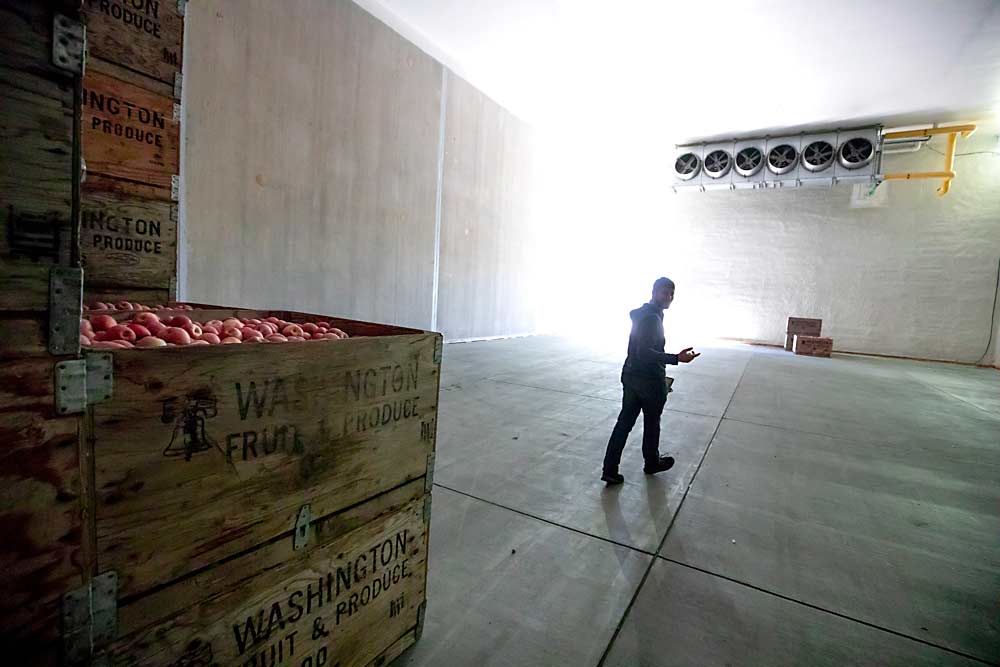
Cold storage comes with a high energy demand. That is increasingly a concern for European packers facing efficiency and refrigerant regulations and high energy costs. But designing and managing cold rooms for efficiency improves fruit quality as well as energy and cost savings, said Marc Sellwig.

“If we have a lack of insulation, we have to run the coolers longer; that increases fruit water loss,” said Sellwig, a German engineer from the Competence Centre for Fruit Growing at Lake Constance, who spoke at the Washington State University Postharvest Fruit School in 2018.
The longer the coolers have to run, the more the relative humidity drops, leading to water loss in the fruit, he explained. The impact of this can be minimized by more efficient room design that can maintain the fruit’s ideal condition with less cycling.
All cold storage rooms face a conflict between cooling and circulation, because every time the fans turn on, it heats up the room you are trying to cool. During the initial cool-down, the fruit is a heat source, but over the storage period the main heat source is ventilation, Sellwig said.
A big challenge during the planning and designing of efficient cold storage systems is the two distinct demands for cold: high demand for cold for a few weeks during the initial cooling, to remove the heat from freshly harvested fruit, and then relatively low demand for cooling during the subsequent months of storage.
Better airflow allows heat stored in the fruit to be removed more quickly and prevents hot spots that can cause storage disorders or lessen fruit quality, Sellwig said.
A 2015 study compared a standard controlled-atmosphere room to an “optimized” room in which air deflectors were installed to curve off ceiling corners, to reduce the room capacity and encourage better air movement, and the evaporator was sealed off.
Sellwig and his colleagues found that these modifications made the airflow more consistent across the entire room. But placement matters: the air deflector installed on the ceiling on the side opposite the evaporator did not offer as much efficiency as those installed above the evaporator.
How you fill the room also matters, Sellwig said. Leaving approximately 10 centimeters between bin rows and 30 centimeters between the bins and the wall, rather than stacking in one big block, results in cooling the room 15 percent faster — thanks to better airflow. Ideally these gaps fall below the fans.
Running fans at lower power can reduce energy consumption with no impact on fruit quality, as found in Sellwig’s experiments using fans as low as half-power.
Significant energy savings can also be found by switching from AC to newer, high-efficiency EC (electronically communicated motor) fans. Sellwig’s research shows that EC fans cut energy use more than 20 percent, just to run the fans, and generate less heat inside the storage room.
“Efficiency matters in two ways: You can make more money by using the same inputs to get better outcomes, or you can use less inputs to get the same outcomes and make more money,” Sellwig said. For storage, where protecting fruit quality is paramount, it turns out that more efficient and economical storage design benefits the fruit as well. •
—by Kate Prengaman






Leave A Comment